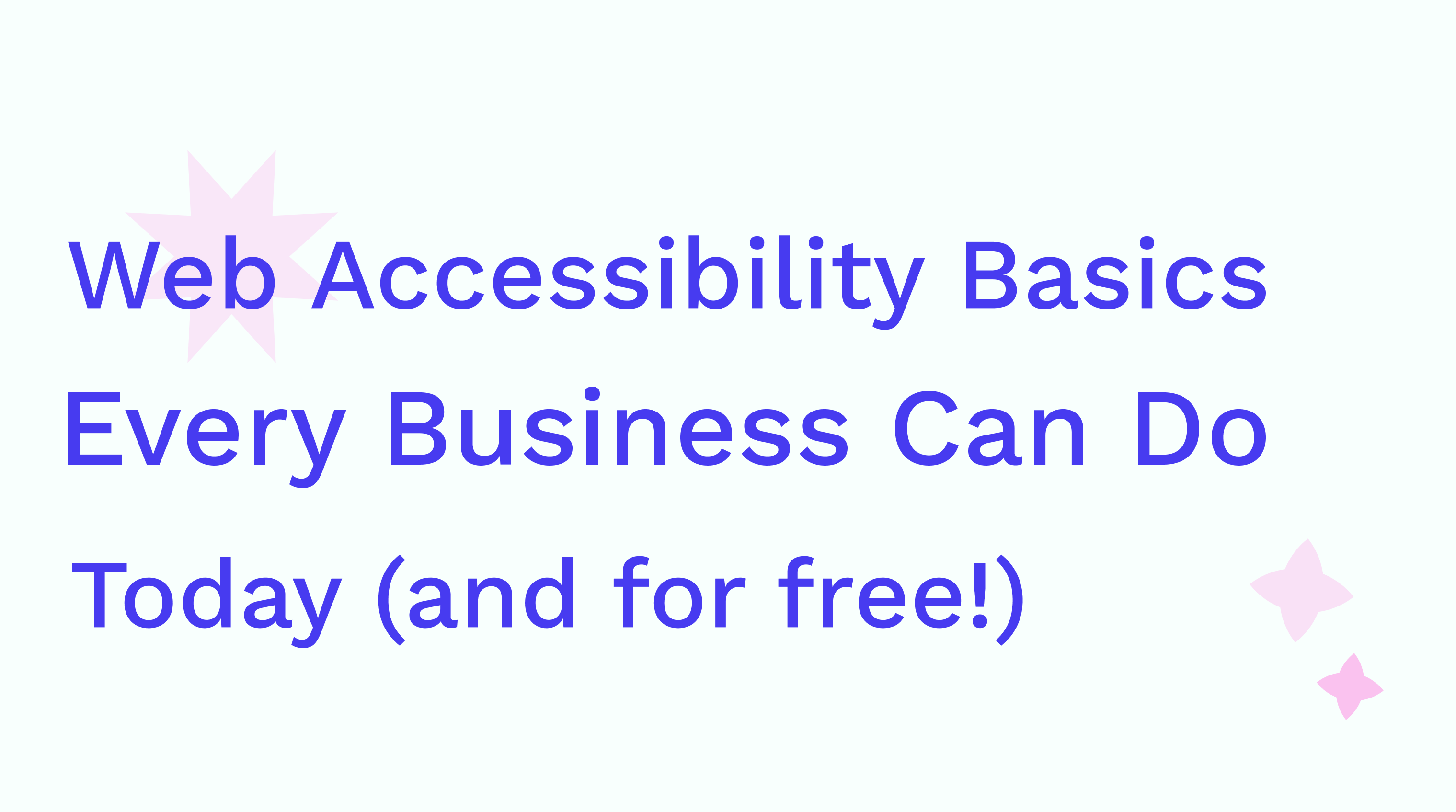Creating an inclusive online presence isn’t just good for your audience—it’s also a smart move for your business.
Accessibility in web design is actually just a few simple things you can do to make your website usable by everyone, especially people with disabilities.
It can all seem a bit much, especially if you’re not very technical but it’s really not all that much to take in – and we break it down pretty well here!
What Is Web Accessibility?
Web accessibility means designing and developing websites so that they can also be used by people with disabilities. This includes visual, auditory, motor, or cognitive impairments. It’s about ensuring everyone, regardless of their abilities, can interact with digital content without barriers.
For example:
- A visually impaired person may rely on screen readers to access content.
- Someone with motor disabilities might use a keyboard instead of a mouse for navigation.
- Individuals with cognitive limitations often benefit from clean, simple layouts and clear instructions.
Steps to Build an Accessible Website
Improving the accessibility of your website doesn’t have to be complicated. Begin with these simple, actionable steps:
1. Choose the Right Content Management System (CMS)
Platforms like WordPress, Shopify, and Squarespace offer accessibility-friendly templates and plugins. Be sure to choose a theme that is designed with accessibility in mind and supports responsive design for usability on mobile devices.
We recommend WordPress because you can use free plugins like WP Accessibility or one of the many others.
2. Provide Alt Text for All Images
Alt text offers a written description of images on your website so that visually impaired visitors using screen readers can understand them. For example, instead of “Image001.jpg,” write something like, “A smiling barista handing a coffee to a customer at a café.”
3. Use Descriptive Headings
Headings should follow a logical structure (e.g., H1, H2, H3) to help screen readers and users quickly scan your content. This isn’t just an accessibility best practice—it also improves content organization for everyone.
4. Ensure Sufficient Color Contrast
The contrast between text and background colors should be high enough to ensure readability. Tools like Contrast Checker can help you find accessible color combinations.
5. Make Navigation Keyboard-Friendly
Test your website by navigating solely through keyboard input (using the Tab key to jump between elements). Ensure that all interactive elements—like buttons and links—are accessible this way.
6. Add Video Captions and Transcripts
If your website includes videos, provide closed captions or full transcripts for any spoken content. This helps not only visitors with hearing impairments but also attracts users who prefer to consume content silently.
Even if you check off just a few of these items, you’d probably get ahead of 97% of all websites across the world – how awesome would that feel?
Hey, and if you ever get stuck, Garaj is always right here!
